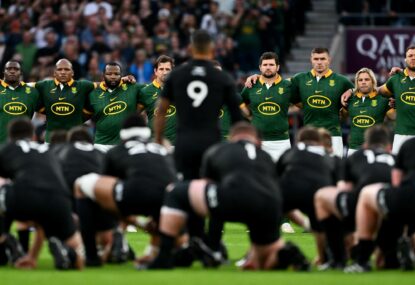I have been spending way too much time in hospitals recently. This is proving most irksome as I do not like visiting hospitals.
I know they are places of healing but you would think for that reason hospitals wouldn’t appear to be so soulless.
I have immense respect for the people who work there. I just only wish their workplaces were more inviting, given that they spend so much time there doing their largely thankless but vital work.
My sympathies also lie with the patients who are being treated there. Being enclosed in a box-like tomb with harsh lighting may prepare them for the final journey but it does nothing to ease their current suffering.
How about some smooth lines or curves, some vibrant interior decor and colours that lift your mood rather than depress you?
Functionality is obviously important but I have the sneaking suspicion that hospitals do not want to encourage overstayers.
The cruel hard edges, the drab decor, the overwhelming stench of disinfectant – don’t get me started on the food – all seem to be designed to make you confront your predicament.
To coin the phrase from Shawshank Redemption, either ‘get busy living or get busy dying.’
Sorry if this all sounds a little depressing. I can assure you, much like the protagonist Andy Dufresne, I am full of hope. I refuse to get beaten down by the dark oppressing forces surrounding me.
Nothing can prepare you for parenthood, though. The emotional rollercoaster is like playing a game of Snakes and Ladders.
Sometimes you’re shooting up the ladder, like holding my baby girl close to my chest for the first time. Other times you’re sliding down a ladder, pacing the hospital corridors trying to remain positive but lack of sleep and the overwhelming feeling of helplessness conspiring against you.
I thought rugby referees had it bad! How did my parents not become nervous wrecks?
I get the impression that the Rugby Championship teams have all experienced these slides and climbs during the recent Autumn Internationals.
Whereas Ireland seemed to all of a sudden land on square 25 and shoot up to 85, the Southern Hemisphere teams have all, to some extent, slid down a snake.
For Argentina, that big snake came along quickly for them against Scotland. They did manage to score 31 points but shipped 41 in return. They scraped home against Italy 20-18, which is no longer a foregone conclusion when playing Italy away, and then hit a morale-boosting ladder against France showing that the drop-goal and boot is justification to take the points when on offer.
New Zealand was another team who finished where they started. The only team to be in the 90s both on the board and the rankings, they seem to like hitting that small snake that keeps sending them back to where they were.
It all started with such promise in Chicago. Sonny Bill Williams looked like he had never been away and it wasn’t so much that the Eagles played badly. It was more a case of the All Blacks playing freely and accurately.
The UK would undo that positivity. Much like the high of Eden Park and the dominant displays against Argentina in the Rugby Championship, New Zealand flattered to deceive on attack and couldn’t find a way to replicate a strong performance.
The attacking mojo was not there. New combinations at 10, 12 and 13 and an opposition that was allowed to rush up on defence with an overly-generous offside line but largely a stout defence that offered very little space, the New Zealand attack appeared just as strangled and lacking in penetration as the attacks they faced.
The positive for me is that it is unrealistic to think that in the knockout games, New Zealand will be afforded the space it craves. There will always be a team who shuts down our attack effectively and, therefore, much like the final in 2011, New Zealand has to find other ways to score when it counts.
That they did so a little more freely against Wales was tempered by the fact that it came a little too close to comfort to the final whistle. Not as much as the largely fringe side against Scotland but certainly much later than the top side did against England in a stirring passage of wet weather play.
South Africa appear to have a side better suited to the heavier grounds and harsher conditions of the UK. Strangely, however, they seemed to be lamenting more than New Zealand the hard, dry grounds of Ellis Park that easily spelled their best performance this year.
In that game, South Africa was wondrously bold and adventurous. The try to Hougaard took the honours for try of the year and deservedly so. That fluidity on attack, by what I read, seemed to desert them this November.
I thought tactically at Ellis Park they took New Zealand by surprise in that first half before they reverted to type in the second half. By then the damage was done. At least looking back at the result. Against Ireland, it was Schmidt who outthought his counterpart and targeted the Springbok rolling maul as a way of shutting their attack down.

Ireland showed their potential with a win over the Springboks. (Photo: AFP)
That first-up defeat was not so much of a surprise given South Africa’s away record in Ireland but the manner of the defeat and the fact that Ireland’s team was also heavily depleted by injuries did make that large tumble down the big snake a shock.
Normality was resumed by a victory against England but the biggest shock was yet to come. It wasn’t so much the result that caused the big shock, however long Wales’ drought had been against the ‘Big Three’. It was how poor South Africa were and the number of mistakes they made.
Usually mistakes can be attributed to the other team and the pressure they exert. However, in this instance Wales were equally dire and both sides seemed to be in a competition to outdo the other on the error count.
These types of games come about through pressure. Both Wales and South Africa desperately wanted to end November on a positive note. Much like someone desperate to put their best foot forward on a first date, they end up slipping and falling over in the process.
Australia will look back on their Autumn tour and come to the strange conclusion that they seemed to build on attack and look more convincing than the opposition as their tour went along and yet they lost their games more convincingly.
It’s tempting to say that after the Wales match – where they probably put in their least convincing display but managed to win – they slid down a series of increasingly larger snakes and lost the most amount of ground.
Being unable to ignore a glaring weakness, however, can turn out to be a good thing. New Zealand have too much brain power to be fooled into thinking that their perfect tour was just that – perfect.
Similarly, Michael Cheika will be encouraged that Australia looked probably the most compelling attacking team out of all the teams on display this tour. He was made all too well aware, however, that the breakdown and the set piece were punishing Australia.
Possession and fluidity on attack can only keep you in a game but it can’t win you the game. Better to confront these problems now than have them pointed out after the World Cup next year.
Much like the game of Snakes and Ladders, rugby is in a constant state of change. Remain static and other teams overtake you. Just as you can rise up quickly, so too can you take a dramatic tumble. We should not be fooled into thinking there is a new world order in rugby after these Autumn Internationals.
Perhaps certain climbs and falls shocked more than others but you only have to look within each team to understand why teams are in a constant state of flux.
Last year the Wallabies had an issue in the centres. Tevita Kuridrani comes along, and despite his injury this November, his place looks assured. Adam Ashely Cooper’s display against England, from what I read, only seemed to confirm this.
Now their problem is in the locks. The emphasis invariably goes on the front row at scrum time but the collective scrummaging as a pack unit is often overlooked. Fix those problems – however difficult they might be – and Australia suddenly look a far more complete and formidable side.
When fixing a specific problem, it’s best to take a global perspective. Much like lineout woes are invariably attributed to the hooker, you only need to look at how ineffective the New Zealand lineout was without Sam Whitelock and Kieran Read to know that the hooker is only one important piece in a jigsaw puzzle.
As Scott Allen pointed out, Andrew Blades may know how to get the best out of his front row but it seems he doesn’t know how to get the best out of the five men pushing behind those three players. Cue the library footage of meerkats and the Benny Hill theme music.
Counting on the status quo to continue is an exercise fraught with danger. In 2013, the fullbacks in world rugby were on fire. Willy Le Roux, Israel Folau, Ben Smith or Israel Dagg, Mike Brown and Rob Kearney all looked sharp, albeit to varying degrees. This year, you could say Rob Kearney was the only one who had any consistency.
Willy Le Roux probably felt the pressure of having to be the creative spark in the Springbok backline. Much like Duane Vermeulen found out, when you’re seen as the team’s lynchpin there is the danger of being overplayed. Sometimes having an enforced rest to watch on the sidelines and feel that frustration with not being involved can serve as a lift in performance the next time you step out onto the field.
Hansen did this with Israel Dagg to some extent but when the loss of Ben Smith’s weight was discovered, I think he should’ve taken the tough decision to rest him for the autumn tour. I only hope that the Highlanders ensure he is in top physical condition before he starts to string Super Rugby performances together. What’s clear is that Ben Smith in 2013 was streaks ahead of the Ben Smith in 2014.
He wasn’t the only one. Israel Folau perhaps makes better sense as a winger than a fullback or at least if Adam Ashley Cooper is on the right wing, the two could interchange during a game.
For a start, for someone who has a reputation for claiming the high ball on attack, this gift seems to be criminally underused by the Wallabies.
When a player makes a name for himself, he often has special attention put on him. The rise of Kuridrani may lead to Folau’s renewed spark in attack but we didn’t get to see that theory put to the test this November.
These slips down the form snakes are symptomatic of a wider problem. Mike Brown is much like Owen Farrell. Well short of his top form and in dire need of a rest. You simply can’t play the same team repeatedly.
Change does lead to new combinations and the attack suffers as a result. But New Zealand showed the value of avoiding a fourth European international as well as mixing up their team.
The attack certainly suffered but the ability to lift the intensity at the right moment showed the value of fresher legs.
Compare New Zealand with South Africa and the accumulative strain of consecutive matches seems to increase the error count and mimimises the contribution of key players.
Of course new finds can lift a side. Rhys Webb, Nicolas Sanchez and Finn Russell show the value of finding solidity in the halves positions. Ireland look formidable in this department with Murray and Sexton and South Africa seemed to regress in this area on this tour.
Similarly, Care and Farrell have not been at the top of their game and New Zealand have yet to find a suitable replacement for Aaron Smith and though Aaron Cruden appears to be confirmed as frontrunner and Beauden Barrett cemented his super sub status.
These are just observations – and often ones not made first-hand – but I put forward this theory that next year’s World Cup is like a game of Snakes and Ladders.
You might well put your money on New Zealand, alone on the nineties, until you realise that just before square 100 is a giant snake sitting on square 99 and that goes all the way back to square 07.
You need luck to get to the end and until that winning roll occurs, anything can happen. This November has shown that there may well be only a few sides capable of stringing consecutive victories together but there are plenty of sides capable of upsetting the apple cart along the way.
I guess that’s why you feel so relieved and overjoyed when you do make it to the end and why it’s so tempting to say you were dealt such a cruel blow of fate when your hopes are dashed in one foul strike of an attacking snake.
There may well have been teams who overtook others this autumn and others who took unexpected tumbles. But the game is still going on. We’d like to predict what might happen based on current positions on the board but we all know that there are more twists and turns waiting to happen and that this coming World Cup is by no means a foregone conclusion.
When you take a slide down a snake there are two ways to react. A grim determination to get back to where you once were or resign yourself to your fate and give up. Conversely, when you land on a ladder you can gloat and say your climb was richly deserved and rightful or you can remain on edge knowing that a tumble might be just around the corner.
To adapt the phrase from the aforementioned film, ‘get busy improving or get busy losing.’ That’s the only way to give yourself the best chance against the external factors that will happen throughout the tournament and are beyond your control.




































































































